Chicago, sometimes known as the "Windy City," is located on the shores of Lake Michigan. This city draws tourists from the US and other countries because of its thriving arts scene, plenty of cultural attractions, fantastic shopping, and intriguing architecture.
With artists like Picasso, Mir, Dubuffet, and Chagall as well as builders like Louis Sullivan and Frank Lloyd Wright making their mark, Chicago has earned a reputation as a major hub for 20th-century architecture and art.
With the Chicago Bears in American football, the Chicago White Sox and Cubs in baseball, and the Chicago Bulls in basketball, the city also has a lot to offer in the world of sports.
The stunning beaches that stretch down the coastline are last but certainly not least and draw hordes of sunbathers in the summer.
Your interests, especially if you're traveling for sporting or cultural events, may influence when you visit Chicago, but spring through fall are the ideal months for weather.
See our list of the top Chicago attractions and things to do for a detailed look at where to go.
1. Go to the Chicago Art Institute.
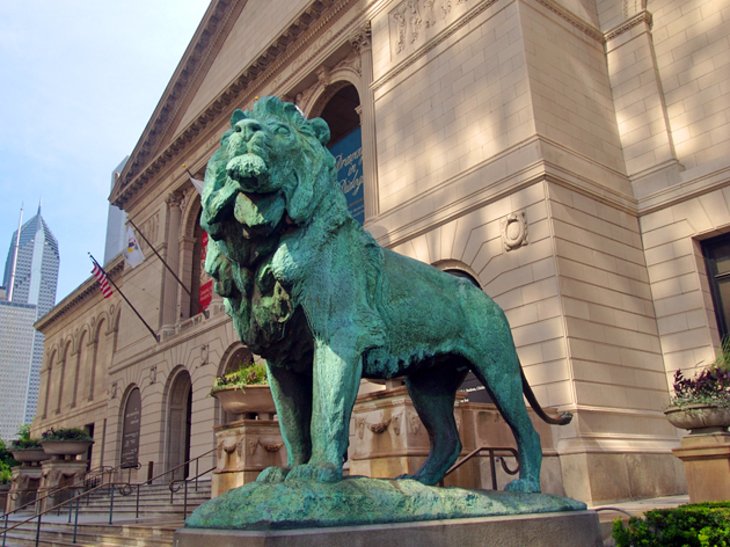
A top-tier museum containing millions of works of art is the Art Institute of Chicago. The extensive collection, which spans thousands of years, contains works in a wide range of media, including sculpture, decorative arts, textiles, prints, photography, painting, and architectural designs, among others.
The Institute is renowned for its collection of impressionist and post-Impressionist paintings, which includes a number of works by Claude Monet as well as Georges Seurat's 1884 A Sunday Afternoon on La Grande Jatte and Renoir's 1879 Acrobats at the Cirque Fernando.
The main structure was constructed for the World's Columbian Exposition in 1893 and was designed in the beaux-arts style by Shepley, Rutan, and Coolidge. Over time, additional structures were erected, and the complex now has 400,000 square feet of space.
2. Explore Millennium Park
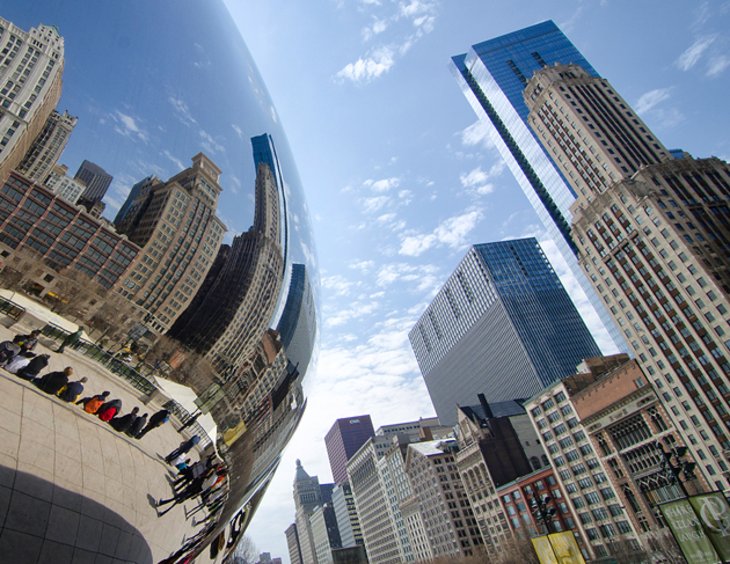
The bigger Grant Park, which is located in the heart of Chicago and is bounded by Michigan Avenue to the west, Columbus Drive to the east, Randolph Street to the north, and Monroe Street to the south, includes Millennium Park. Its focal point is the 110-ton sculpture Cloud Gate, whose mirror-like, polished stainless steel surface was modeled after liquid mercury. It reflects the area, including the sky, the surrounding structures, and the tourists passing through its main arch.
Crown Fountain, a unique contemporary rendition of the historic gargoyle that creates the illusion of water spilling from the mouths of projected pictures of Chicago residents, is another must-see attraction in Millennium Park. The Jay Pritzker Pavilion, an outdoor concert venue, and Lurie Garden, which is free to enter year-round, are two more well-liked activities in this area.
This part of the city is a good location to base yourself because it is close to many of the major attractions and offers fantastic shopping. See our list of suggested hotels in this area for lodging recommendations.
3. Explore Navy Pier.
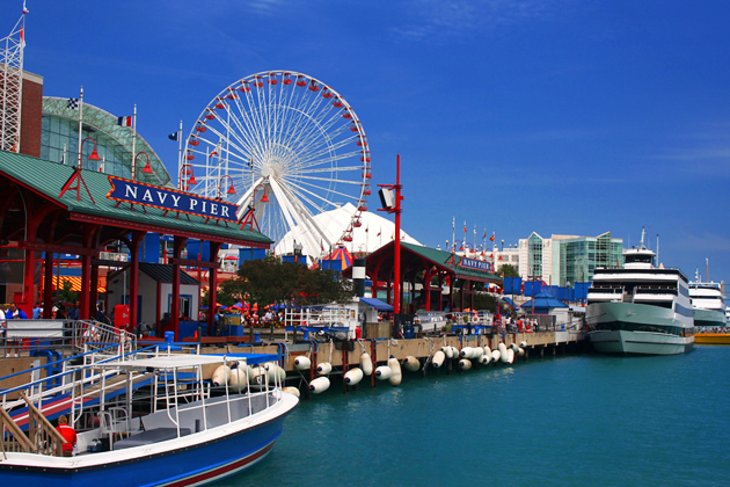
The Navy Pier was initially built in 1916 as a shipping facility and amusement area, but it is today one of Chicago's busiest tourist destinations. Today, the Navy Pier is a 50-acre complex with gardens, amusements, stores, dining options, performance halls, and parks. In Navy Pier Park, there is a 150-foot Ferris wheel and a vintage carousel.
The Chicago Shakespeare Theater, a one-acre, six-story indoor botanical garden, the 3D Imax Theater, and Crystal Gardens are more options for visitors to enjoy. The Chicago Children's Museum is also nearby. The Chicago Festival, which takes place in August, is one of many events held along the Pier throughout year. From here, cruise ships depart on numerous tourist trips.
4. Adler Planetarium's Reach for the Stars
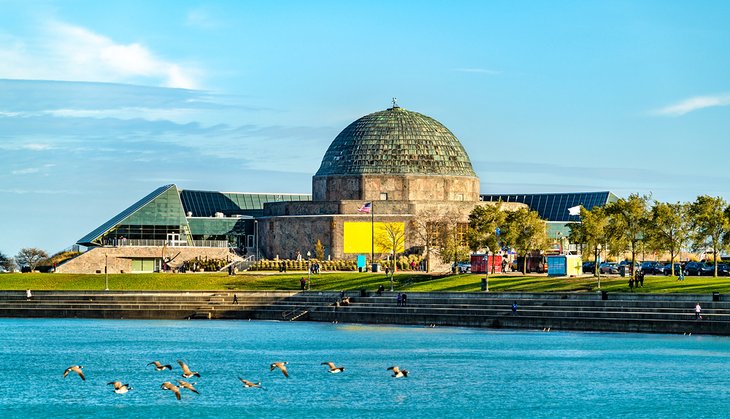
All ages will enjoy the programs and extensive exhibits that the Adler Planetarium has to offer. It is miles above the ones that most children get to visit on field trips. The Adler, which was constructed in 1930 on the shore of Lake Michigan, takes pride in being the first planetarium in the Western Hemisphere.
Two dome theaters of the planetarium host a range of shows, such as explorations of the solar system, the moon, and the night sky over Chicago. There is also a wide variety of exhibitions covering a wide range of subjects, such as astrology, meteors, life on other planets, space exploration, and the history of science.
A number of exhibits are also devoted to the achievements of underrepresented groups, such as female, Latinx, and LGBTQ+ astronomers. An amazing exhibit that examines the significance of the contributions made by Islamic astronomers and how their studies impacted the faith and the wider world is noteworthy. Additionally, there are collections of historical astronomy objects, such as telescopes and numerous antique and prehistoric sundials.
When you go, be sure to allow enough time for the Skyline Walk, which is the greatest location to take pictures of the city skyline without taking a boat tour.
5. Museum of Science and Industry,

The Museum of Science and Industry, which opened in 1933 and is undoubtedly Chicago's most magnificent museum, is located at the northern end of Jackson Park. Its focus is on using natural rules to advance technical and industrial growth.
The museum is credited with being the first in the United States to implement the concept of "hands-on" exhibitions. Numerous exhibits are available for interaction by visitors. The MSI has both ongoing and one-time exhibits, in addition to an OMNIMAX theater.
6. Check out the SkyDeck at Willis Tower for a View
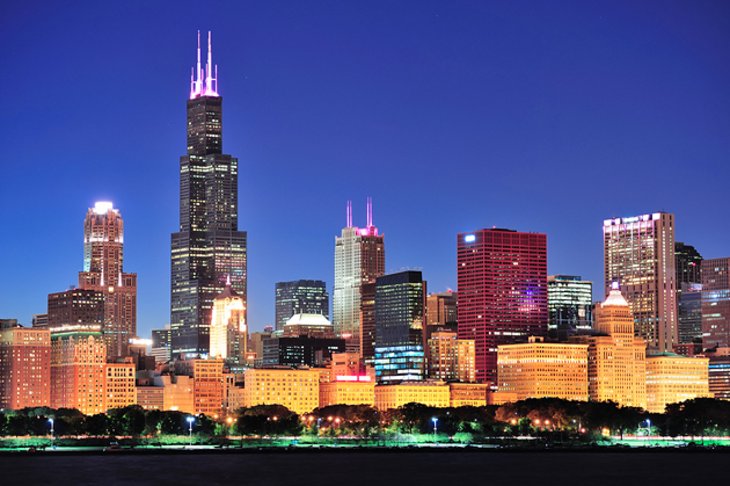
The 110 story Sears Tower, now known as the Willis Tower, held the title of highest office building in the world until the Petronas Towers in Kuala Lumpur were constructed in 1996. Although there are now a number of taller structures, the view from this location is spectacular. On a clear day, you can see 40 to 50 miles over four states and take in Chicago's stunning architecture from above.
The Willis Tower was constructed over the course of three years and opened to the public in 1974. The SkyDeck observation deck is located on the 103rd level of the 1,453-foot-tall structure, 1,353 feet above the earth. Visitors can stand on the Ledge, a glass box with a glass floor that protrudes from the SkyDeck, and look down directly at the city below.
7. Attend the Buckingham Fountain Water Show
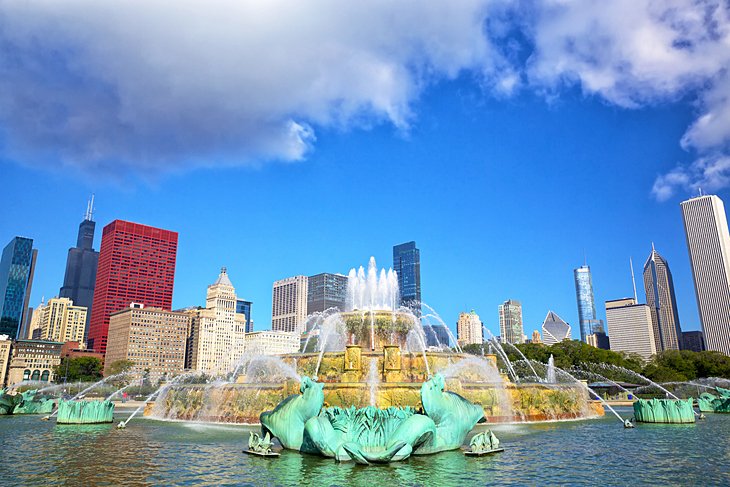
The Clarence Buckingham Memorial Fountain, one of the largest in the world, was constructed in 1927 as a gift from the family. Four seahorses that stand in for the four states that border Lake Michigan surround the central fountain, which was created in the distinctive Art Deco design of the time. The fountain starts up every hour from 8 am to 11 night, blasting 15,000 gallons of water through almost 200 nozzles every minute to produce a stunning spectacle.
If you happen to be in the area after dark, you must witness the water display, which is illuminated. The fountain serves as the hub of Grant Park, a sizable public area in Chicago that is home to numerous attractions and smaller parks including Millennium Park, which is similar to Central Park, one of the most popular attractions in New York City.
The Field Museum of Natural History, the Art Institute of Chicago, the Adler Planetarium, and the Shedd Aquarium are all located on Museum Campus, one of the park's most popular tourist destinations. In addition to hosting events like music and food festivals, Grant Park is home to a number of gardens and recreational amenities.
8. Chicago 360
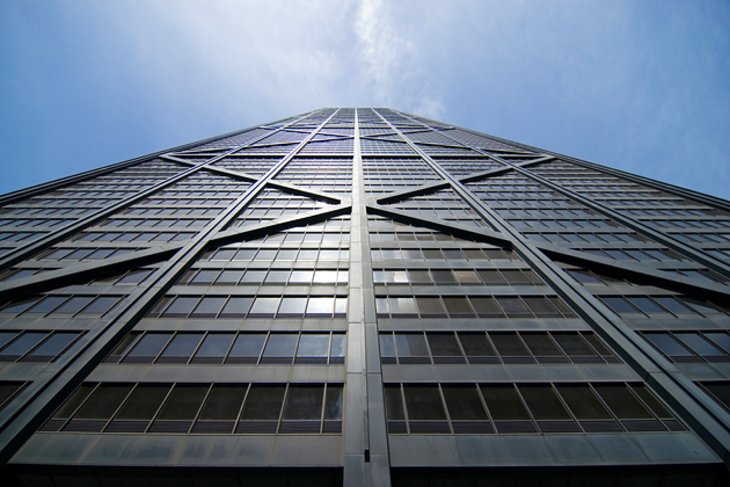
360 Chicago is an observation deck on the 94th floor of the John Hancock skyscraper that is part of the John Hancock Center office complex. It can be easily identified by its dark metallic-looking exterior and the cross-braced steel architecture that goes up the outside of the skyscraper. The expansive observation deck with glass walls offers views of the Chicago skyline and beyond.
The deck's newest element, "Tilt," will appeal to more daring guests since it offers them a unique view from more than 1,000 feet above the Magnificent Mile while tilting them outward at an angle to see straight down from the glass enclosure.
wongbanglean :#Dubai #Travel Dubai destination s: Elevation X Major Tourist Attractions Inwards Chicago https://t.co/rX2yIczukN pic.twitter.com/oO0m3QLGZZ https://t.co/qXb1DEIcOU pic.twitter.com/wsiuvooEBI
— Maria Vaniatrip (@MariaVaniatrip) September 16, 2018
The building's interior is made up of a mix of stores, offices, and apartments. Additionally, the first floor of the structure has a multimedia exhibit that provides details on Chicago and the building of the John Hancock Building.
9. Field Natural History Museum
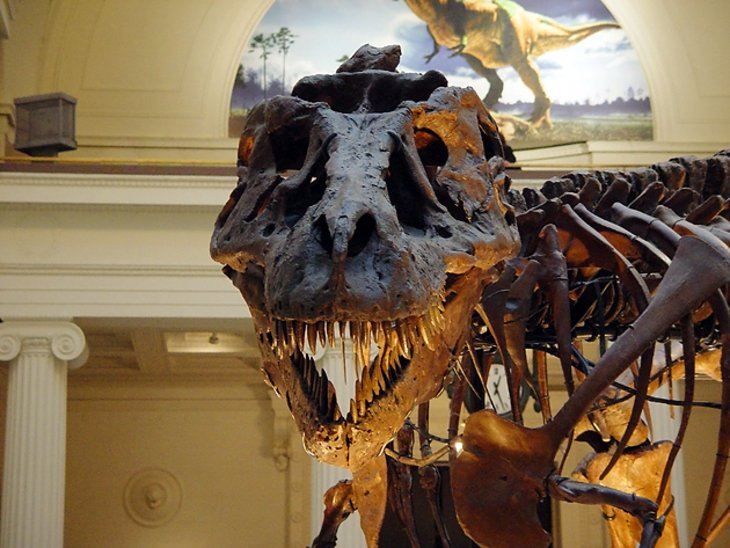
The Field Museum of Natural History was established in 1893 to display the biological and anthropological collections assembled for the World Columbian Exposition. It was formerly known as the Columbian Museum of Chicago. The name was changed in 1905 to honor Marshall Field, a significant supporter of the museum and proprietor of a department store.
About 20 million artifacts and specimens from a range of fields, including anthropology, geology, botany, and zoology, are included in the permanent collection. The permanent exhibits on Ancient Egypt, the cultures of North, Central, and South America, as well as "Sue," the largest and most complete Tyrannosaurus rex skeleton in the world, are noteworthy. All through the year, there are regular special rotating exhibits.
10. The Magnificent Mile and Michigan Avenue
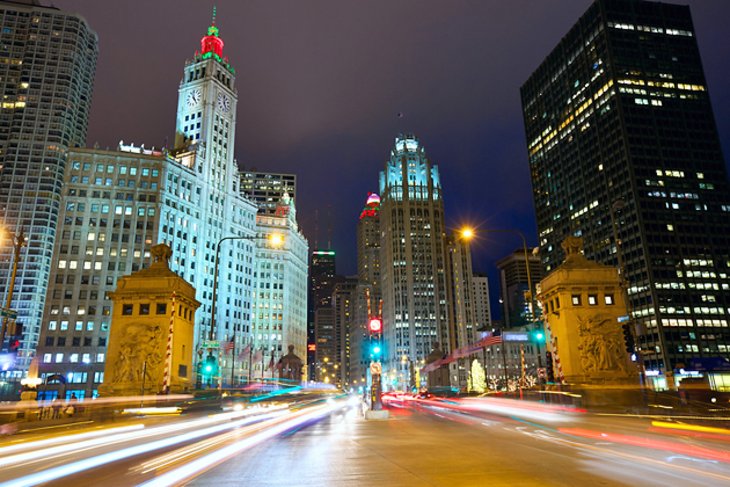
Undoubtedly one of America's most beautiful boulevards is Michigan Avenue. A stretch of Michigan Avenue north of the Chicago River is known as the "Magnificent Mile" and is home to a number of upscale stores, boutiques, and art galleries.
The Tribune Tower, the Wrigley Building, and the John Hancock Center are a few of the points of interest nearby. At Madison Street, Michigan Avenue is divided into North and South directions. The theaters in this area, where traveling plays, musicals, and comic acts are presented, are another draw.
11. Visit Wrigley Field or Attend a Game
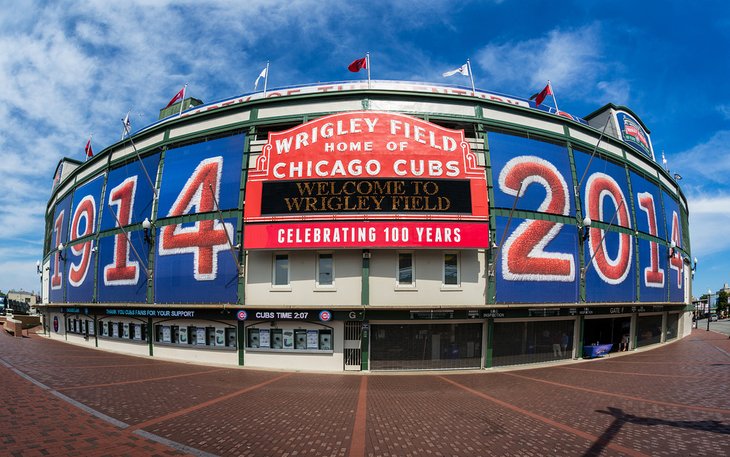
Only Fenway Park in Boston has a longer history in Major League Baseball than Wrigley Field, the home of the Chicago Cubs, which opened in 1914. The 1917 no-hitter pitching match between Jim Vaughn of the Cubs and Fred Toney of the Reds, as well as Babe Ruth's "called shot" in game three of the 1932 World Series, were both witnessed at this field.
When there are no games that day, you can tour the press box, the field, and the dugouts during in-season ballpark tours.
12. Lincoln Park
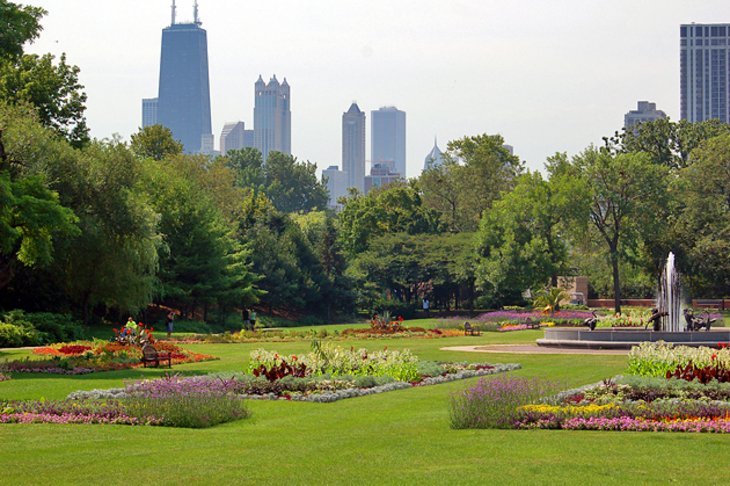
Chicago's largest park, Lincoln Park, is a six-mile length of open space next to Lake Michigan. The gorgeous Lincoln Park Conservatory and the Lincoln Park Zoo, one of the nation's oldest zoos, are located in this well-liked park. The Peggy Notebaert Nature Museum and the Chicago History Museum are also nearby.
There are beaches, jogging pathways, biking trails, and playing fields for people who just want to relax outside. The park's grounds contain a number of noteworthy sculptures and works of public art, including Augustus Saint Gaudens' Standing Statue of Lincoln. (1887).
13. Shedd Aquarium
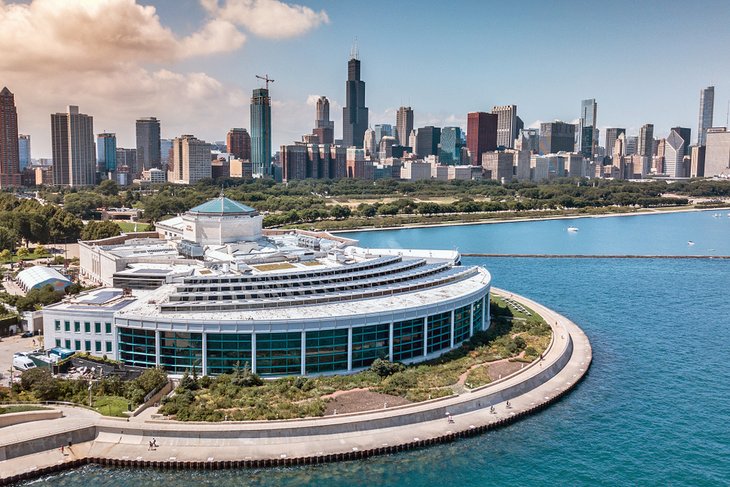
Visit the Shedd Aquarium if Lake Michigan has you curious about the aquatic species that may be found just offshore of Chicago. There are displays inside that cover aquatic habitats from the Arctic to the Caribbean.
The Polar Play Zone is one of the must-do attractions if you are traveling with young children. Here, kids can dress up as their favorite animal, go on a pretend submarine adventure, and pet sea stars. The Stingray touch tank is another well-liked destination for kids of all ages. There are many interested stingrays in this enormous tank, and they enjoy being stroked and touched.
14. Lincoln Park Zoo
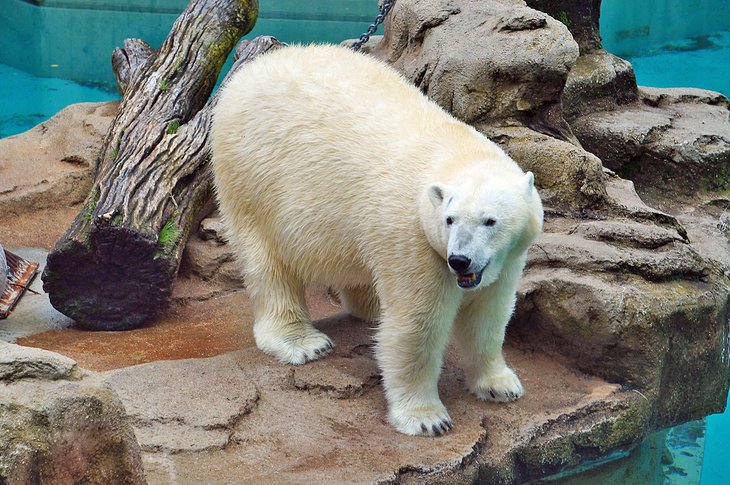
A visit to the Lincoln Park Zoo is another entertaining activity for families in Chicago. More than 200 species from all over the world are housed in the zoo. The amazing animals with which we coexist on this planet are highlighted in sixteen separate exhibitions. Penguins, otters, and seals are a few of the funniest animals. Visit the African Apes at the Regenstein Center for a genuinely intriguing experience.
https://utravelo.com/en/chicagos-unique-public-art-scene
The zoo offers more than just animal exhibits; in fact, it's one of Chicago's top locations for breathtaking floral displays. The gardening team takes care of more than 2,000 unique plants representing 1,200 species annually.
15. Chicago Riverfront Trail and Riverwalk
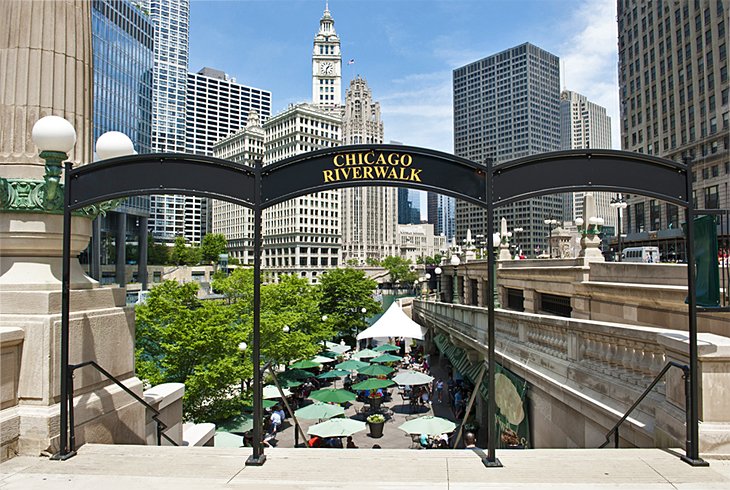
The Chicago River, which flows parallel to the lakeside through the center of the city, is renowned for having many movable bridges. There are 18 bridges in just two miles, and they can all accommodate huge boats.
Visitors may get a close-up view of one of the city's most iconic bridges' mechanisms at the McCormick Bridgehouse & Chicago River Museum, where you can literally watch the gears turn as the bridge moves.
There are numerous dining establishments on the Riverwalk, which also often holds special events. Several river trips and cruises also leave from the Riverwalk.
The 18-mile Lakefront Trail, which is fully paved, runs from 71st Street on the South Side to Ardmore Street on the North Side and provides stunning views of the city skyline and Lake Michigan. It is accessible to pedestrians and vehicles propelled by people, and it is bordered by beaches as well as gardens, parks, and recreation spaces. Along the trail are many of the city's greatest attractions, such as Soldier Field, Lincoln Park, and Navy Pier.
16. Asian Institute Museum
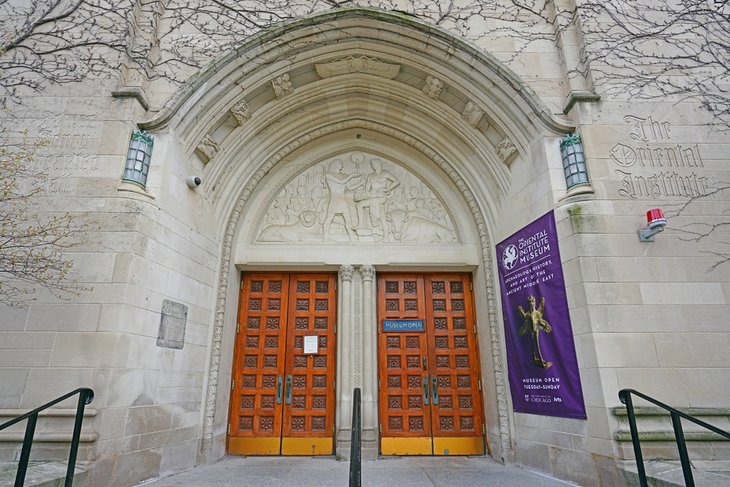
On the campus of the University of Chicago, the Oriental Institute Museum is devoted to the archaeology and art of the Near East. This collection includes artifacts discovered during excavations at Megiddo and sites in Egypt, Sudan, Nubia, Iraq, Turkey, and Israel.
The Mesopotamian Gallery, which showcases artifacts from approximately 100,000 BC to the 7th century AD, and two Egyptian Galleries, which feature artifacts ranging from commonplace items to mummification relics, are among the permanent exhibitions.
17. The Rookery Structure
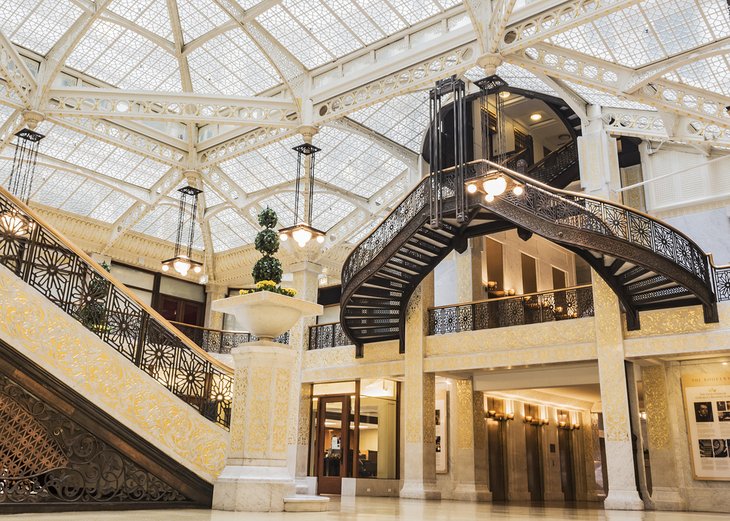
Daniel Burnham and John Root designed the Rookery Building in 1888, but Frank Lloyd Wright redesigned the interior lobby and patio in 1907. The façade of this 12-story structure is in the Roman Revival and Queen Anne styles, but the actual architectural highlights are the central light court and the decorative ironwork on the grand staircases.
The Rookery is a structure that is included on the Register of National Historic Places and received its name from the huge number of pigeons who frequented it. The building, as well as other locations including the Bach House and the Robie House in Hyde Park, are also open for tours by the Frank Lloyd Wright Trust.
18. Take in a Show at the Chicago Theater in Style
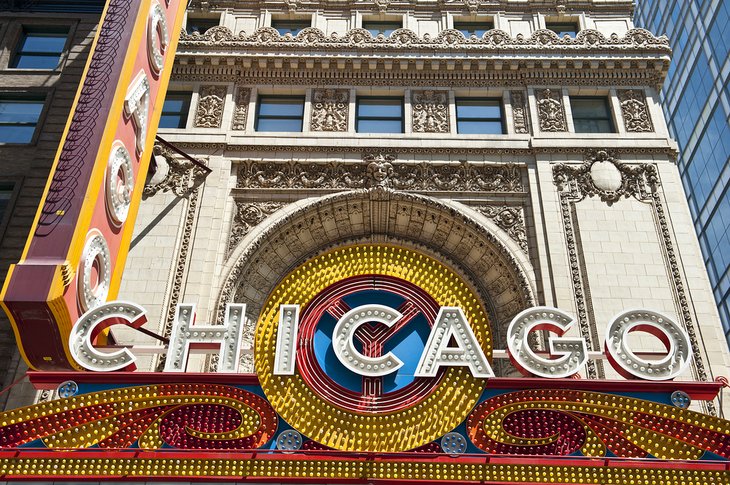
This magnificent Chicago landmark is obvious thanks to the theater's distinctive marquee and gorgeous façade. The Arc de Triomphe in Paris served as inspiration for the front of the structure, which was constructed in 1921 and has stained glass and an elaborate neon sign.
The inside is decorated with French Baroque design that was influenced by the Versailles Palace. Before entering the enormous theater, which is seven floors high, guests will encounter a majestic foyer with elaborate features and a grand staircase. Even if you can't make it to a performance, stop by or arrange a tour to get a closer look.
The theater today features a range of theatrical acts by famous performers, including musicians and comedians. Check out The Second City on North Wells Street for nightly live comedy performances if you'd prefer a smaller setting. From the beginning of Tina Fey, Bill Murray, Steve Carrell, and many others' careers, this stage has hosted a number of well-known comedic performances.

